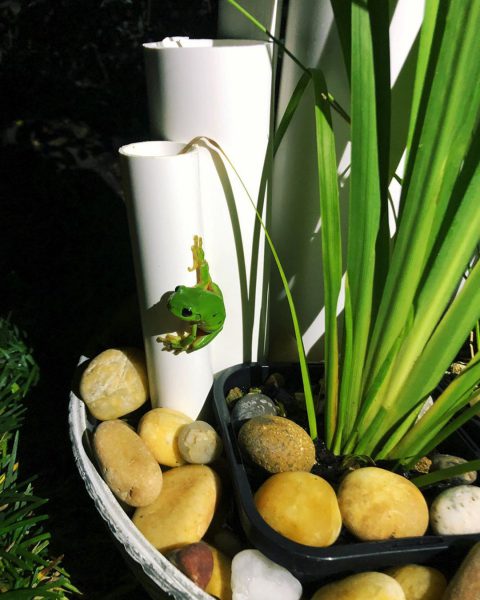Find the perfect place for a tree frog's house, such as in the flowerbeds that build the tree frog's house, or near shrubs, trees, and other tall plants. Tree frogs like to hang out on plants because they have lots of hiding places, lots of bugs to eat, and branches where they can just sit and wait for the bugs to crawl. Tree frogs are found on all continents except Antarctica, but are the most diverse in the tropics of the Western Hemisphere. About 30 species live in the United States, and more than 600 species live in Latin America. Not surprisingly, many tree frogs are arboreal, meaning they live in trees. How to create a frog habitat at home? Frogs naturally prefer cool, damp places. This can be achieved by carefully arranging terracotta pots and ceramic pipes and partially filling them. Prepare rocks and logs to hide in thick litter and dig a place for frogs to dig holes. Aquatic tree frogs are generally smaller than terrestrial frogs because they are usually supported by twigs and leaves. Most tree frogs rarely land on the ground except when they mate and lay eggs, but some tree frogs lay eggs or vegetation on water-containing trees. Read on to learn about tree frogs.
Where do tree frogs live in the world?
Tree frogs are found on all continents except Antarctica, but are the most diverse in the tropics of the Western Hemisphere. About 30 species live in the United States, and more than 600 species live in Latin America. Not surprisingly, many tree frogs are arboreal, meaning they live in trees.
How to create a frog habitat at home?
Make sure the planter is near the water's edge so that the frog has quick and easy access to the water source. Place soil and plants around The top of the planter is more camouflaged by predators and is more comfortable for frogs. Add rocks and aquatic plants to the frog's house.
Do tree frogs lay eggs on trees?
Most tree frogs rarely land on the ground except when they mate and lay eggs, but some tree frogs lay eggs on water-containing trees and vegetation.
How are tree frogs affected by the environment?
They breathe through the skin, making them particularly sensitive to changes in the environment. Threats to tree frogs include habitat destruction, pollution, climate change, and diseases such as chytridiomycosis. Not all members of the tree frog family live in trees, and not all frogs that live in trees belong to the tree frog family.
Does the tree frog have a house?
Most tree frogs find shelters in trees. .. Some, such as the gray tree frog (Hyla chrysoscelis), snuggle up to the ditch of the bark and use camouflage to protect them from predators.
Where do tree frogs stay?
Tree frogs mainly inhabit trees in forests with warm climates, but some also inhabit grasslands, swamps and other aquatic environments.
What do tree frogs live in?
Appearance of tree frogs Most of these frogs are small in size because they are mainly arboreal habitats and inhabit leaves and small branches.
Where do tree frogs sleep?
Aquatic frogs are generally active at night. At night, you may be looking for food on land, still near the water. Arboreal frogs: Gray treefrogs are commonly found during the day in sleep-like positions on the horizontal branches of the tree (body near the branches, chin, limbs hidden under the belly).

Below you will find two helpful answers on a similar topic. 👇
Do vultures eat bone?How many species of cetaceans are there?
